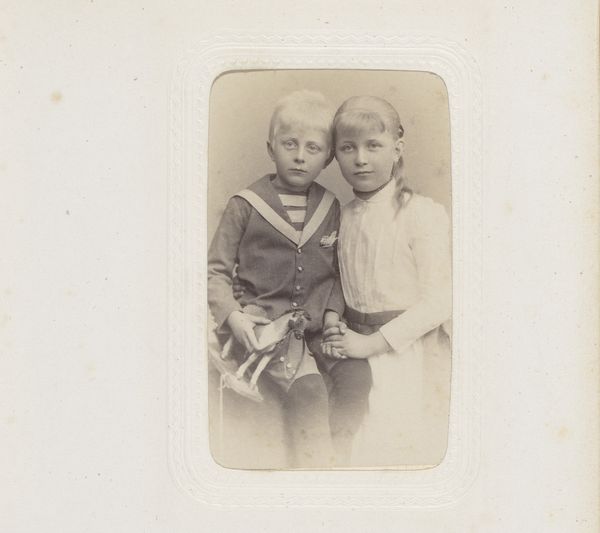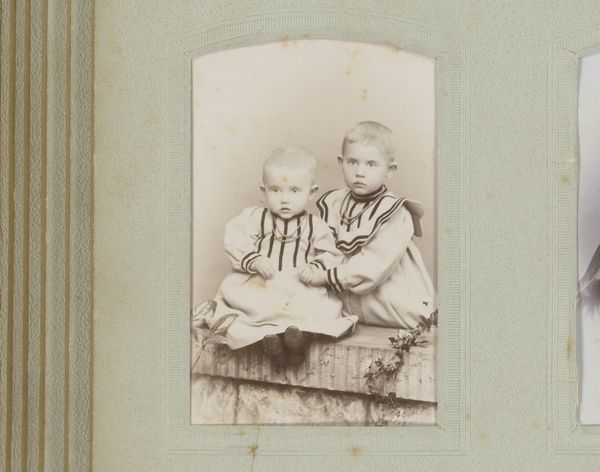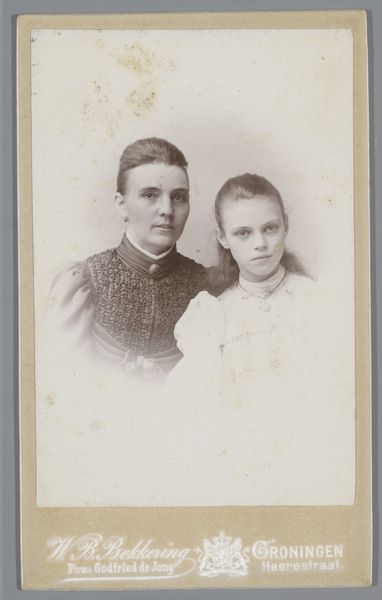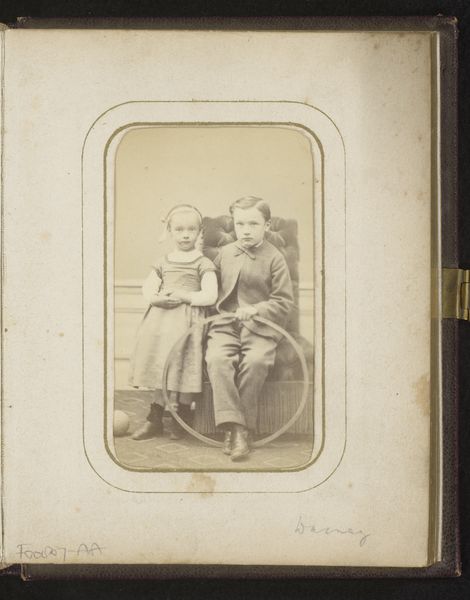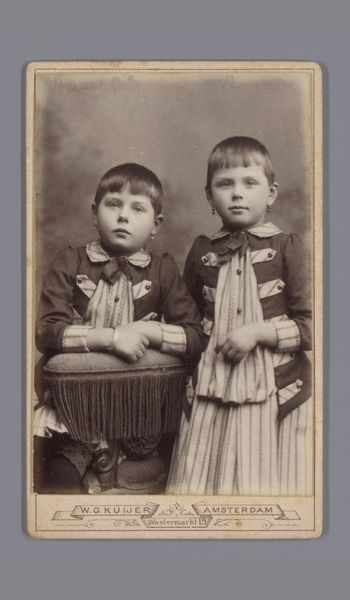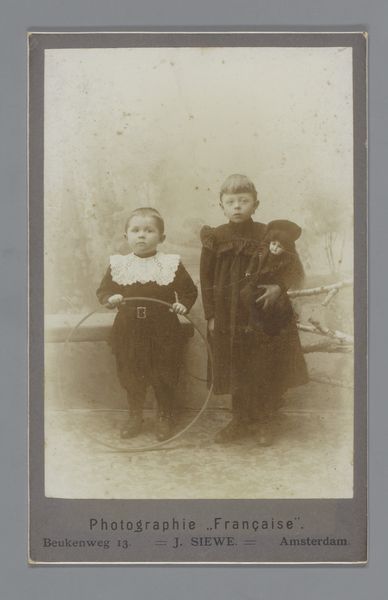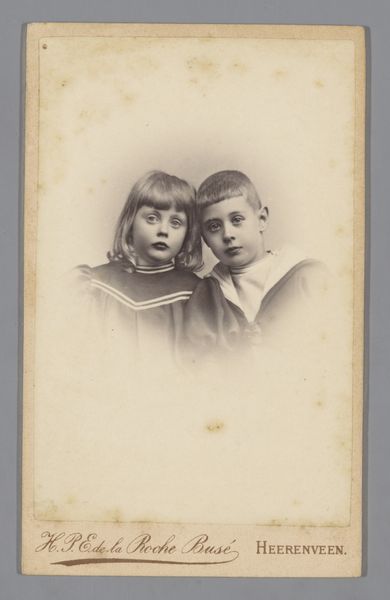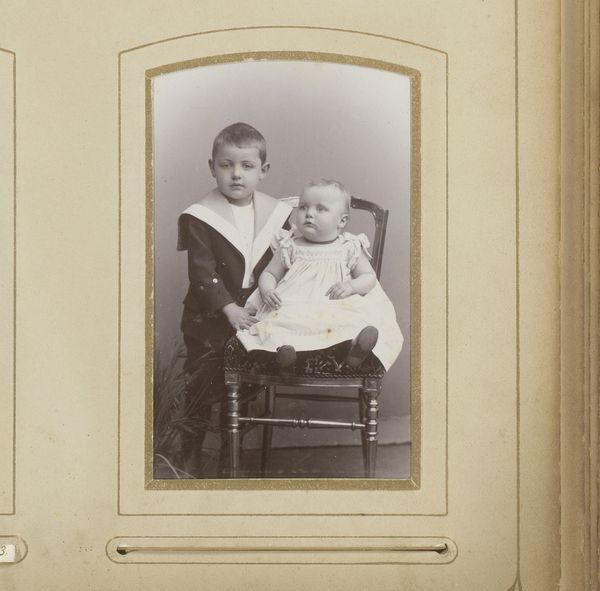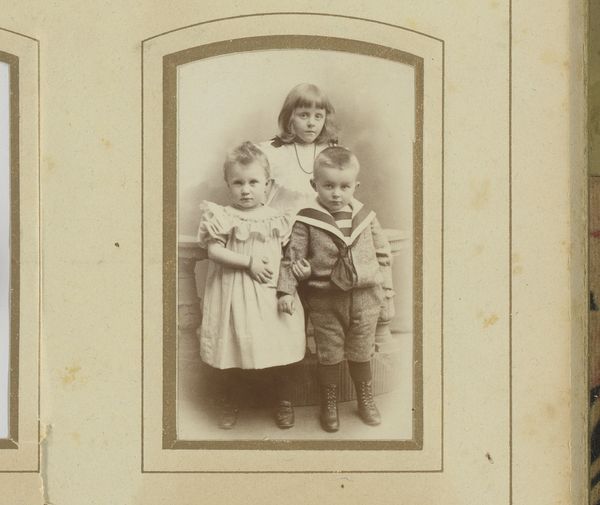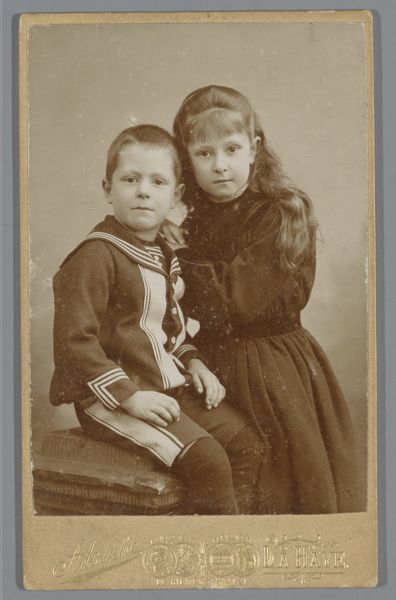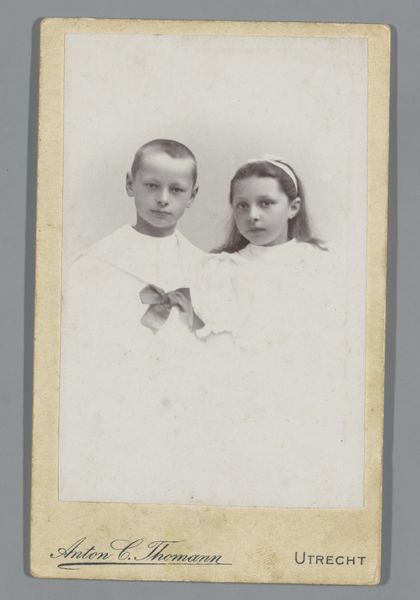
Dimensions: height 83 mm, width 52 mm
Copyright: Rijks Museum: Open Domain
Curator: This fascinating image is titled "Portret van een jongen en een meisje," which translates to "Portrait of a Boy and a Girl." Dating from 1890 to 1910, it provides a glimpse into childhood at the turn of the century through the medium of photography. The Hermann Tietz profile adds to its intriguing historical background. Editor: The tonal range is incredibly constrained—almost entirely grayscale—with some gorgeous textures arising out of it, particularly in the girl's lace collar. But those faces, so serious, strike a melancholy chord with me. What was life like then, materially, to warrant such gravity? Curator: Indeed, it speaks volumes about the socio-political constraints of that time, where childhood innocence was perhaps prematurely shaped by societal expectations. Photographic portraits like these were status symbols, tools in creating and disseminating identity within a rapidly evolving social landscape. It shows their clothing in details; these could signal certain messages about their families' social class. Editor: Exactly, and the very process of image-making then wasn’t the quick, easy thing it is for us. This was a crafted object; consider the photographer’s choice to render them side-by-side within a single frame. How might the materials themselves—the photographic paper, the chemical developers—have influenced the final sepia tonality that’s imbued the entire work? Curator: It’s a fascinating consideration of agency. What dictates the framing: economics or culture? These portraits would not simply capture appearances, but reflect broader narratives and contribute to societal dialogues, sometimes supporting but at other times contesting social norms. Editor: These details contribute so much more depth to its presence—knowing a bit about the material origins allows me to more thoroughly admire it. Curator: Reflecting upon the image’s historical contexts provides deeper empathy for those times. We can never fully step into that era but approaching with such a mindset does help. Editor: Understanding these histories makes them come alive and I'll appreciate its textural nuances now even more.
Comments
No comments
Be the first to comment and join the conversation on the ultimate creative platform.
